13.02.2025 | 233,266 views
The Gong Festival of the Central Highlands, a UNESCO-recognized intangible cultural masterpiece, is not only the pride of Vietnam but also a treasure of humanity. Amidst the vast and majestic Central Highlands, the echoing sound of gongs acts as an invisible thread connecting people with nature, history, and community. Visiting Lam Dong, the heart of the Central Highlands, tourists will have the opportunity to immerse themselves in this unique cultural space, where music and festival blend together, creating an irresistible attraction for anyone who loves traditional beauty.
1. Discovering the World of Central Highlands Gongs
1.1. Gongs: The Voice of the Mountains and Forests
Gongs, sacred and unique musical instruments, are cultural symbols of ethnic minorities in the Central Highlands. Internationally known as “goong,” gongs are not merely musical instruments but also an inseparable part of the spiritual life, beliefs, and history of this land. According to researchers, gongs originated from the Bronze Age, and may even have predecessors in the primitive sounds of lithophones and stone gongs. The emergence of gongs marked a significant step forward in the history of Vietnamese music, affirming the unique cultural identity of the nation.
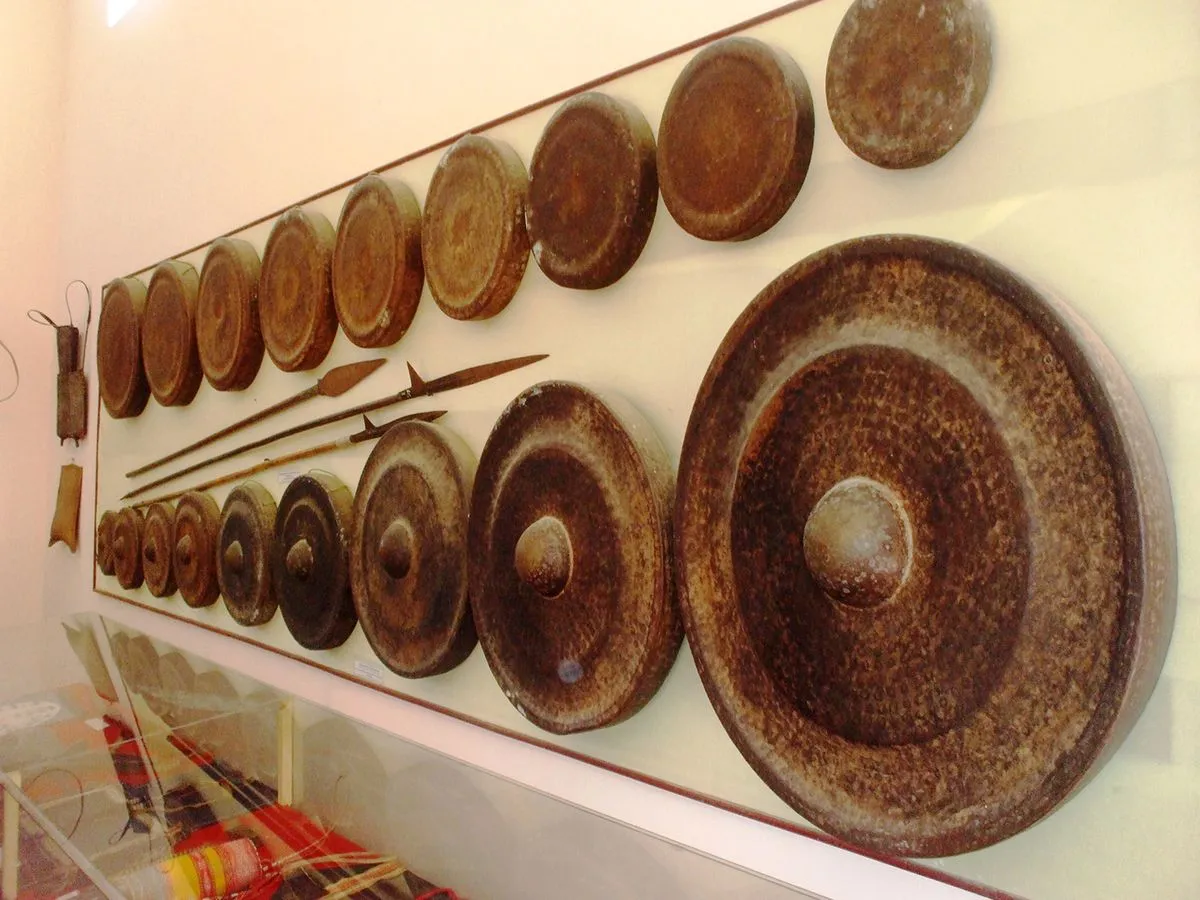
Since ancient times, the sound of gongs has resonated in every festival and important event of ancient Vietnamese people. The majestic, sometimes melodious, sometimes urging sound of gongs not only enlivens the festival space but is also considered a bridge between humans and deities, between the past and the present. The intricate patterns on each gong are not only artistic imprints but also historical witnesses, reflecting cultural changes over time. Despite many changes in modern society, gongs still maintain their position as a priceless intangible cultural heritage, jointly preserved and passed on to future generations by the State and international organizations.
1.2. The Space of the Central Highlands Gong Festival
In the mindset of the Central Highlanders, gongs are not just musical instruments but also symbols of wealth, power, and spirituality. In the past, owning gongs was a privilege of noble and wealthy families, and the value of a set of gongs could be equivalent to dozens of buffaloes or elephants. Therefore, the sound of gongs only truly resonated during major festivals, marking moments of community gathering, sharing joy, and connecting spiritually.
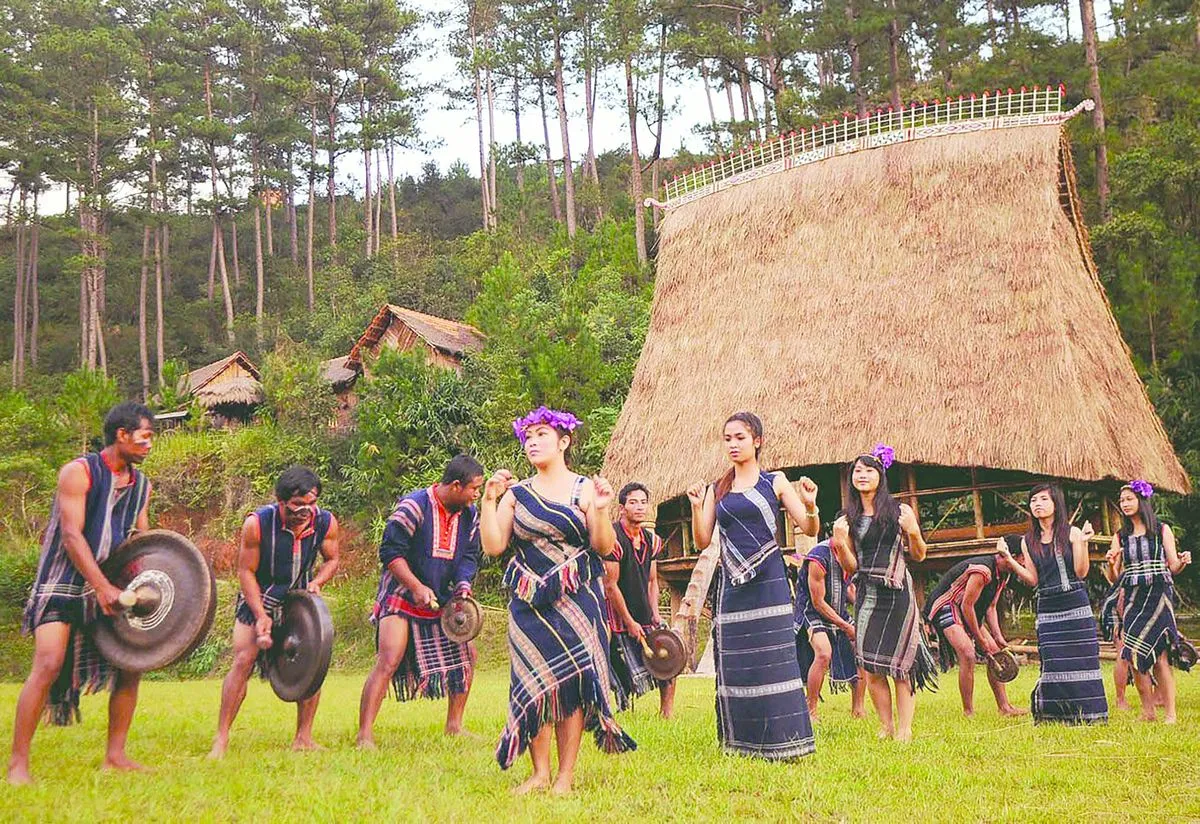
Today, the Central Highlands Gong Festival is held annually, rotating among the provinces of Kon Tum, Gia Lai, Dak Lak, Dak Nong, and Lam Dong. The festival is not only a cultural event but also a golden opportunity to promote tourism, introduce the beauty of gong culture in particular and Central Highlands culture in general to domestic and international friends. Coming to the festival, visitors will immerse themselves in a cultural space rich in national identity, admire traditional rituals, enjoy unique gong music, and explore the unique cultural beauty of each locality. Each festival season, the organizers also cleverly combine rituals and festivals characteristic of each province and ethnic group, creating diversity and unique attraction.
1.3. Secrets to Creating Gong Sounds
To create the unique sounds of gongs, Central Highlands artisans use two main techniques: striking with a mallet and striking with the wrist. Gong mallets are also divided into two types: soft mallets and hard mallets. Hard mallets are usually crafted from precious wood, meticulously carved, while soft mallets are made from dried wild pineapple roots or hard mallets wrapped in soft cloth.
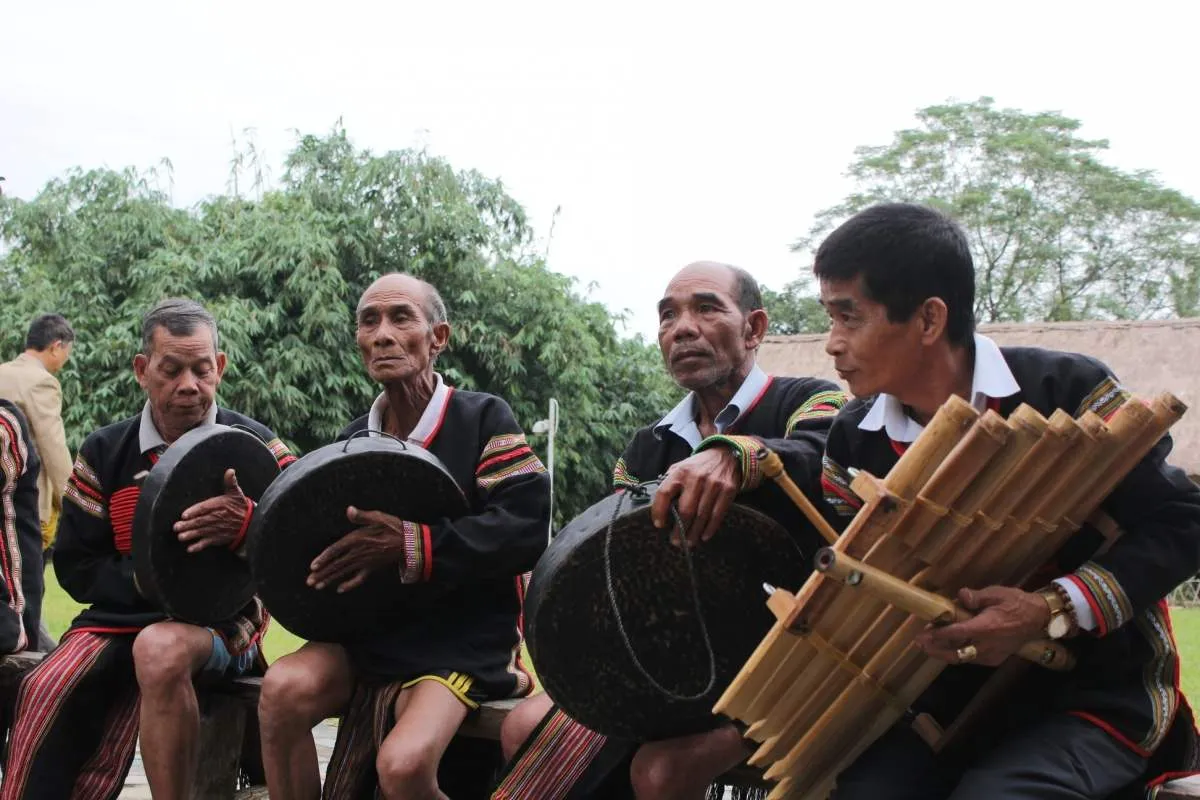
Each type of mallet and striking technique creates distinct timbres. Soft mallets produce resonant, warm, heroic, and full sounds, while hard mallets bring powerful, decisive, and echoing sounds. The wrist-hitting technique requires dexterity and subtlety, creating mysterious, distant, and somewhat melancholic timbres.
To create a complete gong ensemble, the artist must skillfully combine both hands, coordinating rhythmically between different types of mallets and striking techniques. In the Central Highlands Gong Festivals, the melodies are often very complex, requiring harmonious and synchronized coordination among the members of the gong ensemble. It is the harmony between sound, technique, and collective spirit that creates the special attraction of gongs, bringing empathy, concentration, and excitement to both performers and audiences.
1.4. The Identity of Gong Music
Central Highlands gong music is extremely rich and diverse, created based on the needs of spiritual communication, expressing aspirations, and depicting the daily life of people. Each ritual, each special occasion of the year has its own gong music pieces, deeply imbued with the culture and beliefs of each ethnic group.
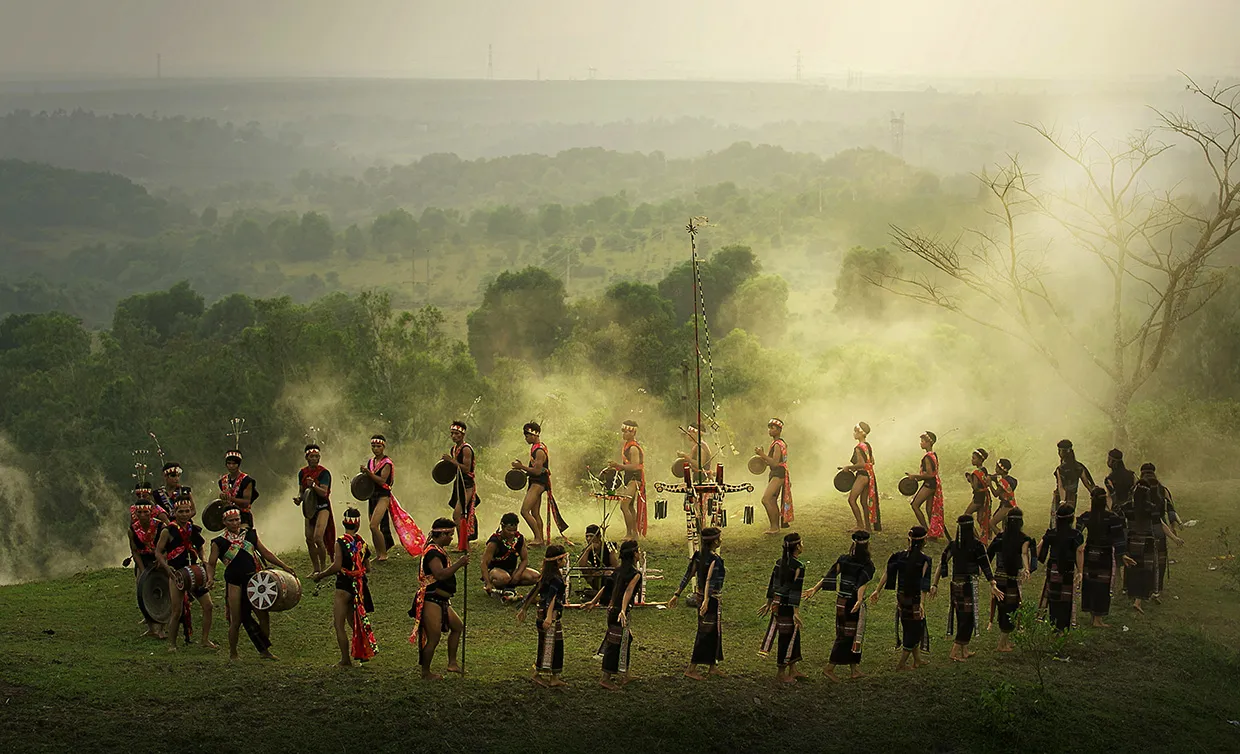
In the buffalo stabbing ceremony, an important ritual of many Central Highlands ethnic groups, the gong ensemble will play pieces such as Cheng, Spo, Pru. The heroic and powerful melodies of these pieces recreate the glorious battles of ancestors, the wars to protect villages, arousing national pride and martial spirit.
Conversely, in the tomb abandonment ceremony, a ritual to send off the deceased to the afterlife, the Arap gong ensemble brings melancholic and poignant melodies. On the final night of the tomb abandonment ceremony, relatives will kneel before the Pnang (altar) to remember the deceased, the Arap gong sounds echoing like farewell words, wishing the soul of the departed to be liberated and free from earthly attachments. When the shaman finishes praying, the Xoang gong piece with its bustling rhythm will sound, dispelling sadness, bringing a joyful atmosphere, expressing belief in rebirth and the cycle of life.
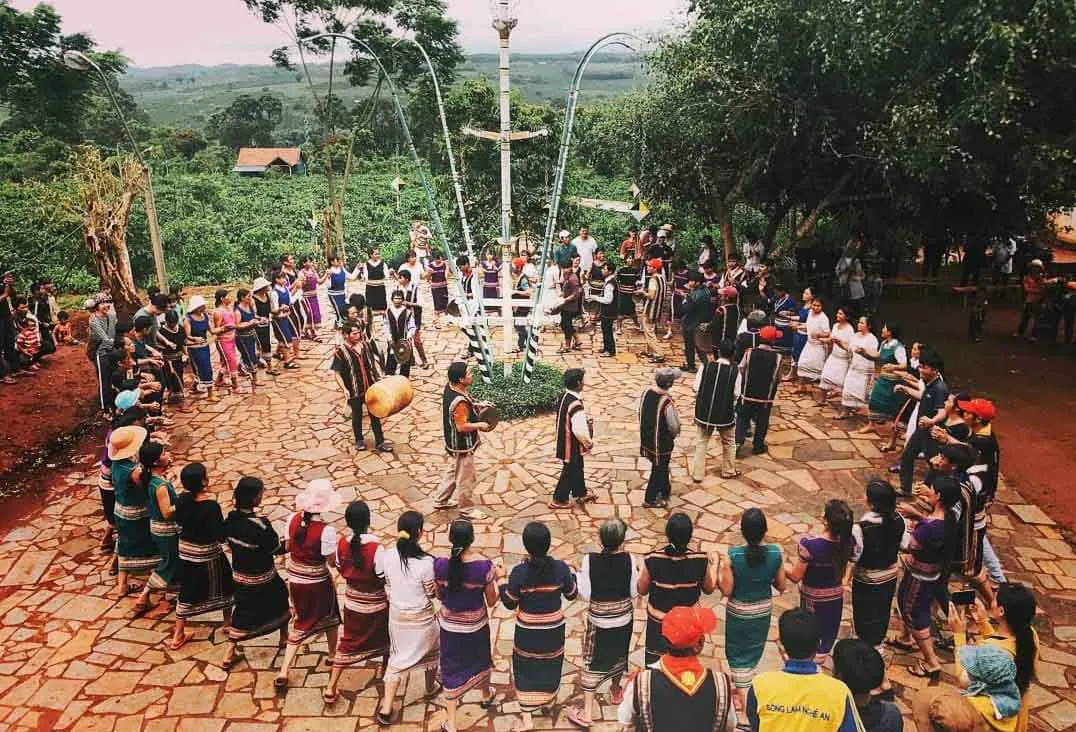
2. Deep Cultural Values of the Central Highlands Gong Festival
The Central Highlands Gong Festival is a colorful cultural picture, created by the contributions of many brotherly ethnic groups such as Gia Rai, E De Kpah, Ba Na, Xo Dang, Brau, Co Ho… Each ethnic group, each land brings its own unique features, enriching the common cultural identity of the Central Highlands. Gongs are often seen as musical instruments for men, however, in some ethnic groups, both men and women can participate in performances. In particular, the E De ethnic group has a tradition that only women are allowed to play gongs, showing the special role and position of women in the community.
Gong music is not only diverse in melody but also rich in meaning. Each melody, each gong piece is associated with the daily life, thoughts, and feelings of the Central Highlands people. The sound of gongs is considered the voice of the community, a means to send aspirations and prayers to deities, connecting people with the mysterious spiritual world.

3. Experiencing the Central Highlands Gong Festival in Lam Dong
To serve tourism needs and promote culture, Lam Dong, especially Da Lat, regularly organizes Central Highlands Gong Festivals, attracting a large number of domestic and international tourists. Coming to the Gong Festival in Lam Dong, visitors will experience a miniature Central Highlands cultural space, with full of traditional rituals, music, dances, and unique cuisine.
The ritual part usually begins with an introduction to the village, culture, and customs of the indigenous people. The most important highlight is the fire deity worshiping ritual, the sacred fire is lit along with prayers, wishing for peace and luck for the community and visitors. Following that are unique art performances such as the vibrant Wă kwằng dance, the graceful New Rice Celebration dance, the melancholic A rap mo o dance, and the jubilant Rong Chieng Festival dance group. All blend together, creating a brilliant and colorful cultural picture.
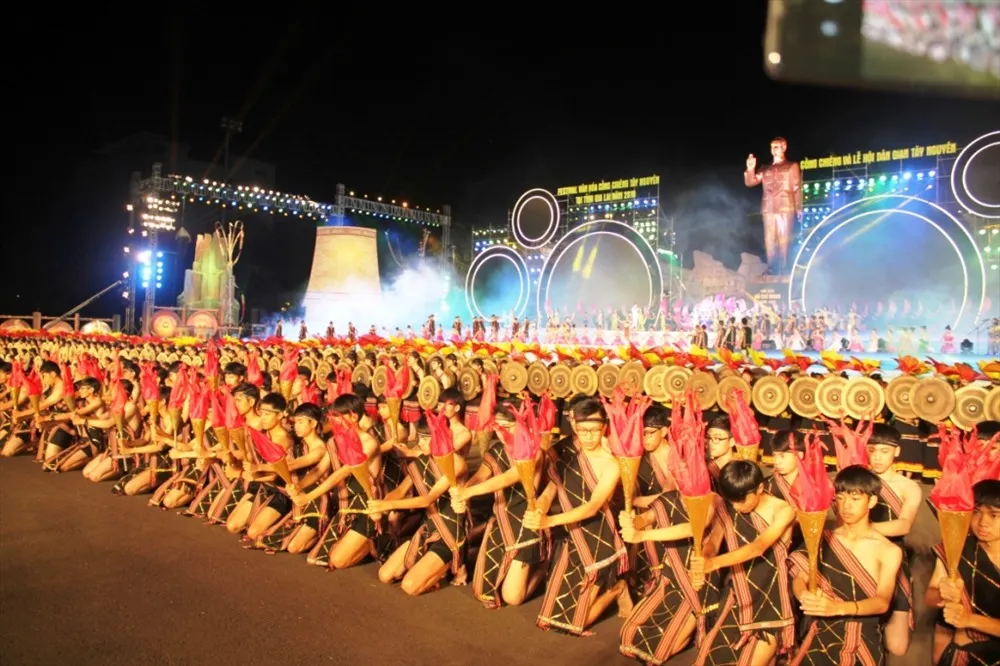
After the solemn ritual part, visitors will immerse themselves in the bustling festival atmosphere. Here, visitors have the opportunity to learn about the life closely associated with the mountains and forests of the Central Highlands people, explore the history and meaning of gongs, buffalo stabbing festivals, new rice celebration festivals, and many other unique cultural features. In particular, the cultural exchange section is an opportunity for visitors to directly experience playing gongs under the guidance of artisans, dance, sing together, and enjoy Central Highlands cuisine. These experiences will surely leave a deep and unforgettable impression on each visitor.
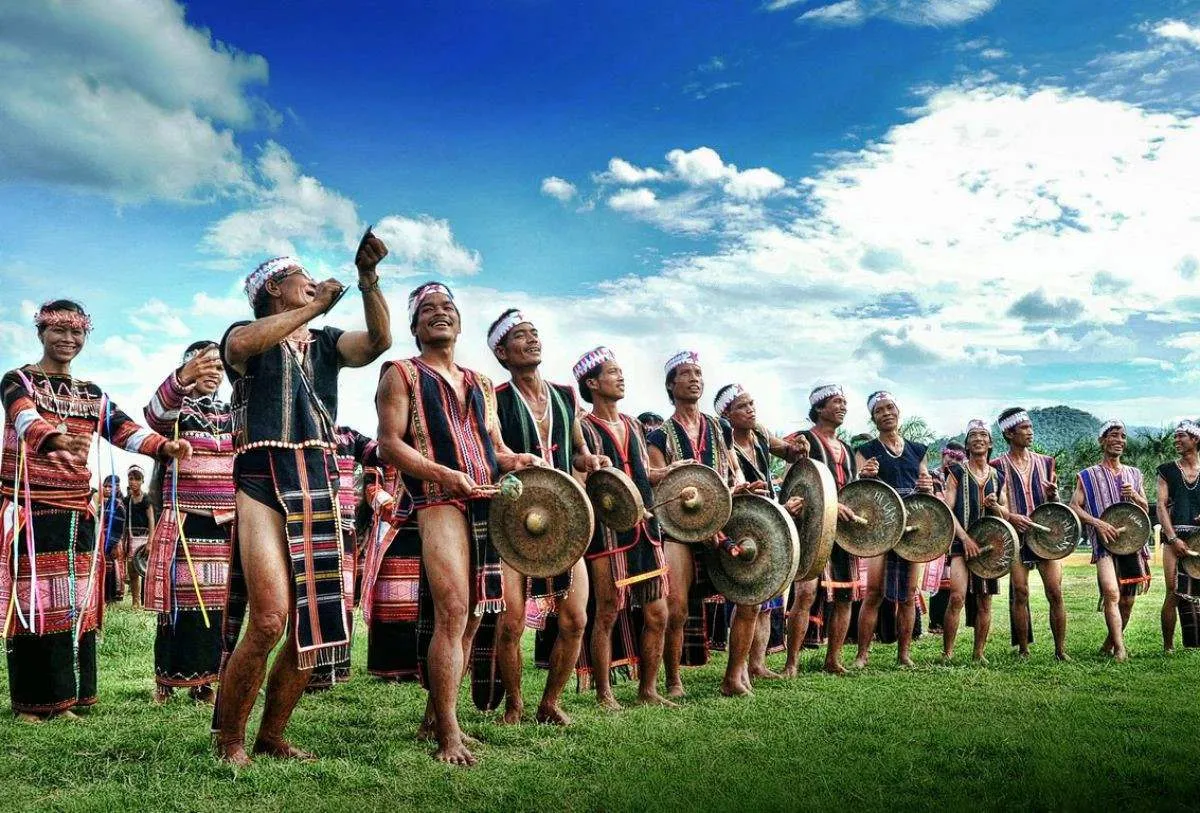
The Central Highlands Gong Festival is not just a cultural event but also a journey of discovery, experience, and connection. Hopefully, through this article, MIA.vn has provided readers with useful information and aroused a love for this priceless cultural heritage. Come to the Central Highlands, immerse yourself in the space of the Gong Festival and discover the exciting things that await you!
Tuyet Trinh
Source: Gonatour
Keywords: da lat festival